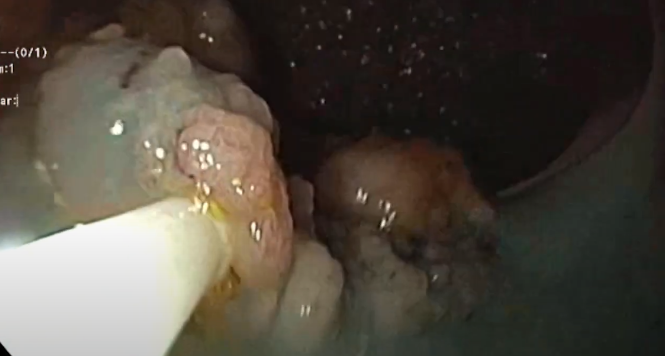Laterally Spreading Lesions With Focus of T1 Cancer Treated by Hybrid EMR and EFTR
Douglas K. Rex, MD, MASGE, reviewing Chua JS, et al. Endosc Int Open 2021 Nov.
Patients with laterally spreading lesions and endoscopic evidence of T1 cancer (usually of morphologic change combined with NBI International Colorectal Endoscopic classification 3 or Kudo V features) can be treated by a biopsy of the malignant area and then surgical resection.
In this series, 6 patients were treated by endoscopic mucosal resection (EMR) of the benign-appearing area, followed by same-session endoscopic full-thickness resection (EFTR) of the malignant-appearing area.
Complete histologic resection of the invasive cancer was achieved in 5 of 6 patients, with no adverse events and no recurrence at a median follow-up of 10 months.

COMMENTAs evidence accumulates that deep submucosal invasion without other adverse histologic features is not associated with an increased risk of lymph node metastasis, the rationale for this procedure will rise. In selected cases, this approach may be more efficient than endoscopic submucosal dissection and provide a superior histologic specimen for the area with cancer.
Note to readers: At the time we reviewed this paper, its publisher noted that it was not in final form and that subsequent changes might be made.
CITATION(S)
Chua JS, Dang H, Zwager LW, et al; on behalf of the Dutch eFTR Working Group. Hybrid endoscopic mucosal resection and full-thickness resection for large colonic polyps harboring a small focus of invasive cancer: a case series. Endosc Int Open 2021;9:E1686-E1691. (https://doi.org/10.1055/a-1529-1447)


